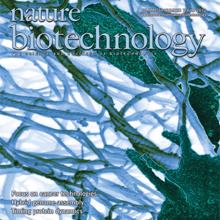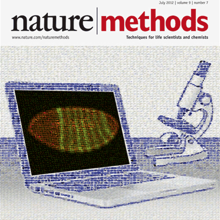Filter
Associated Lab
10 Janelia Publications
Showing 1-10 of 10 resultsFew technologies are more widespread in modern biological laboratories than imaging. Recent advances in optical technologies and instrumentation are providing hitherto unimagined capabilities. Almost all these advances have required the development of software to enable the acquisition, management, analysis and visualization of the imaging data. We review each computational step that biologists encounter when dealing with digital images, the inherent challenges and the overall status of available software for bioimage informatics, focusing on open-source options.
The functional state of a cell is largely determined by the spatiotemporal organization of its proteome. Technologies exist for measuring particular aspects of protein turnover and localization, but comprehensive analysis of protein dynamics across different scales is possible only by combining several methods. Here we describe tandem fluorescent protein timers (tFTs), fusions of two single-color fluorescent proteins that mature with different kinetics, which we use to analyze protein turnover and mobility in living cells. We fuse tFTs to proteins in yeast to study the longevity, segregation and inheritance of cellular components and the mobility of proteins between subcellular compartments; to measure protein degradation kinetics without the need for time-course measurements; and to conduct high-throughput screens for regulators of protein turnover. Our experiments reveal the stable nature and asymmetric inheritance of nuclear pore complexes and identify regulators of N-end rule–mediated protein degradation.
An important role of visual systems is to detect nearby predators, prey, and potential mates [1], which may be distinguished in part by their motion. When an animal is at rest, an object moving in any direction may easily be detected by motion-sensitive visual circuits [2, 3]. During locomotion, however, this strategy is compromised because the observer must detect a moving object within the pattern of optic flow created by its own motion through the stationary background. However, objects that move creating back-to-front (regressive) motion may be unambiguously distinguished from stationary objects because forward locomotion creates only front-to-back (progressive) optic flow. Thus, moving animals should exhibit an enhanced sensitivity to regressively moving objects. We explicitly tested this hypothesis by constructing a simple fly-sized robot that was programmed to interact with a real fly. Our measurements indicate that whereas walking female flies freeze in response to a regressively moving object, they ignore a progressively moving one. Regressive motion salience also explains observations of behaviors exhibited by pairs of walking flies. Because the assumptions underlying the regressive motion salience hypothesis are general, we suspect that the behavior we have observed in Drosophila may be widespread among eyed, motile organisms.
Live imaging of large biological specimens is fundamentally limited by the short optical penetration depth of light microscopes. To maximize physical coverage, we developed the SiMView technology framework for high-speed in vivo imaging, which records multiple views of the specimen simultaneously. SiMView consists of a light-sheet microscope with four synchronized optical arms, real-time electronics for long-term sCMOS-based image acquisition at 175 million voxels per second, and computational modules for high-throughput image registration, segmentation, tracking and real-time management of the terabytes of multiview data recorded per specimen. We developed one-photon and multiphoton SiMView implementations and recorded cellular dynamics in entire Drosophila melanogaster embryos with 30-s temporal resolution throughout development. We furthermore performed high-resolution long-term imaging of the developing nervous system and followed neuroblast cell lineages in vivo. SiMView data sets provide quantitative morphological information even for fast global processes and enable accurate automated cell tracking in the entire early embryo. High-resolution movies in the Digital Embryo repository
Nature News: "Fruitfly development, cell by cell" by Lauren Gravitz
Nature Methods Technology Feature: "Faster frames, clearer pictures" by Monya Baker
Andor Insight Awards: Life Sciences Winner
Sample size is a critical component in the design of any high-throughput genetic screening approach. Sample size determination from assumptions or limited data at the planning stages, though standard practice, may at times be unreliable because of the difficulty of a priori modeling of effect sizes and variance. Methods to update the sample size estimate during the course of the study could improve statistical power. In this article, we introduce an approach to estimate the power and update it continuously during the screen. We use this estimate to decide where to sample next to achieve maximum overall statistical power. Finally, in simulations, we demonstrate significant gains in study recall over the naive strategy of equal sample sizes while maintaining the same total number of samples.
We describe a general computational method for designing proteins that self-assemble to a desired symmetric architecture. Protein building blocks are docked together symmetrically to identify complementary packing arrangements, and low-energy protein-protein interfaces are then designed between the building blocks in order to drive self-assembly. We used trimeric protein building blocks to design a 24-subunit, 13-nm diameter complex with octahedral symmetry and a 12-subunit, 11-nm diameter complex with tetrahedral symmetry. The designed proteins assembled to the desired oligomeric states in solution, and the crystal structures of the complexes revealed that the resulting materials closely match the design models. The method can be used to design a wide variety of self-assembling protein nanomaterials.
In an interferometer-based fluorescence microscope, a beam splitter is often used to combine two emission wavefronts interferometrically. There are two perpendicular paths along which the interference fringes can propagate and normally only one is used for imaging. However, the other path also contains useful information. Here we introduced a second camera to our interferometer-based three-dimensional structured-illumination microscope (I(5)S) to capture the fringes along the normally unused path, which are out of phase by π relative to the fringes along the other path. Based on this complementary phase relationship and the well-defined phase interrelationships among the I(5)S data components, we can deduce and then computationally eliminate the path length errors within the interferometer loop using the simultaneously recorded fringes along the two imaging paths. This self-correction capability can greatly relax the requirement for eliminating the path length differences before and maintaining that status during each imaging session, which are practically challenging tasks. Experimental data is shown to support the theory.
The intrinsic aberrations of high-NA gradient refractive index (GRIN) lenses limit their image quality as well as field of view. Here we used a pupil-segmentation-based adaptive optical approach to correct the inherent aberrations in a two-photon fluorescence endoscope utilizing a 0.8 NA GRIN lens. By correcting the field-dependent aberrations, we recovered diffraction-limited performance across a large imaging field. The consequent improvements in imaging signal and resolution allowed us to detect fine structures that were otherwise invisible inside mouse brain slices.
Locusts demonstrate remarkable phenotypic plasticity driven by changes in population density. This density dependent phase polyphenism is associated with many physiological, behavioral, and morphological changes, including observations that cryptic solitarious (solitary-reared) individuals start to fly at dusk, whereas gregarious (crowd-reared) individuals are day-active. We have recorded for 24-36 h, from an identified visual output neuron, the descending contralateral movement detector (DCMD) of Schistocerca gregaria in solitarious and gregarious animals. DCMD signals impending collision and participates in flight avoidance maneuvers. The strength of DCMD’s response to looming stimuli, characterized by the number of evoked spikes and peak firing rate, varies approximately sinusoidally with a period close to 24 h under constant light in solitarious locusts. In gregarious individuals the 24-h pattern is more complex, being modified by secondary ultradian rhythms. DCMD’s strongest responses occur around expected dusk in solitarious locusts but up to 6 h earlier in gregarious locusts, matching the times of day at which locusts of each type are most active. We thus demonstrate a neuronal correlate of a temporal shift in behavior that is observed in gregarious locusts. Our ability to alter the nature of a circadian rhythm by manipulating the rearing density of locusts under identical light-dark cycles may provide important tools to investigate further the mechanisms underlying diurnal rhythmicity.
In a wide range of biological studies, it is highly desirable to visualize and analyze three-dimensional (3D) microscopic images. In this primer, we first introduce several major methods for visualizing typical 3D images and related multi-scale, multi-time-point, multi-color data sets. Then, we discuss three key categories of image analysis tasks, namely segmentation, registration, and annotation. We demonstrate how to pipeline these visualization and analysis modules using examples of profiling the single-cell gene-expression of C. elegans and constructing a map of stereotyped neurite tracts in a fruit fly brain.


